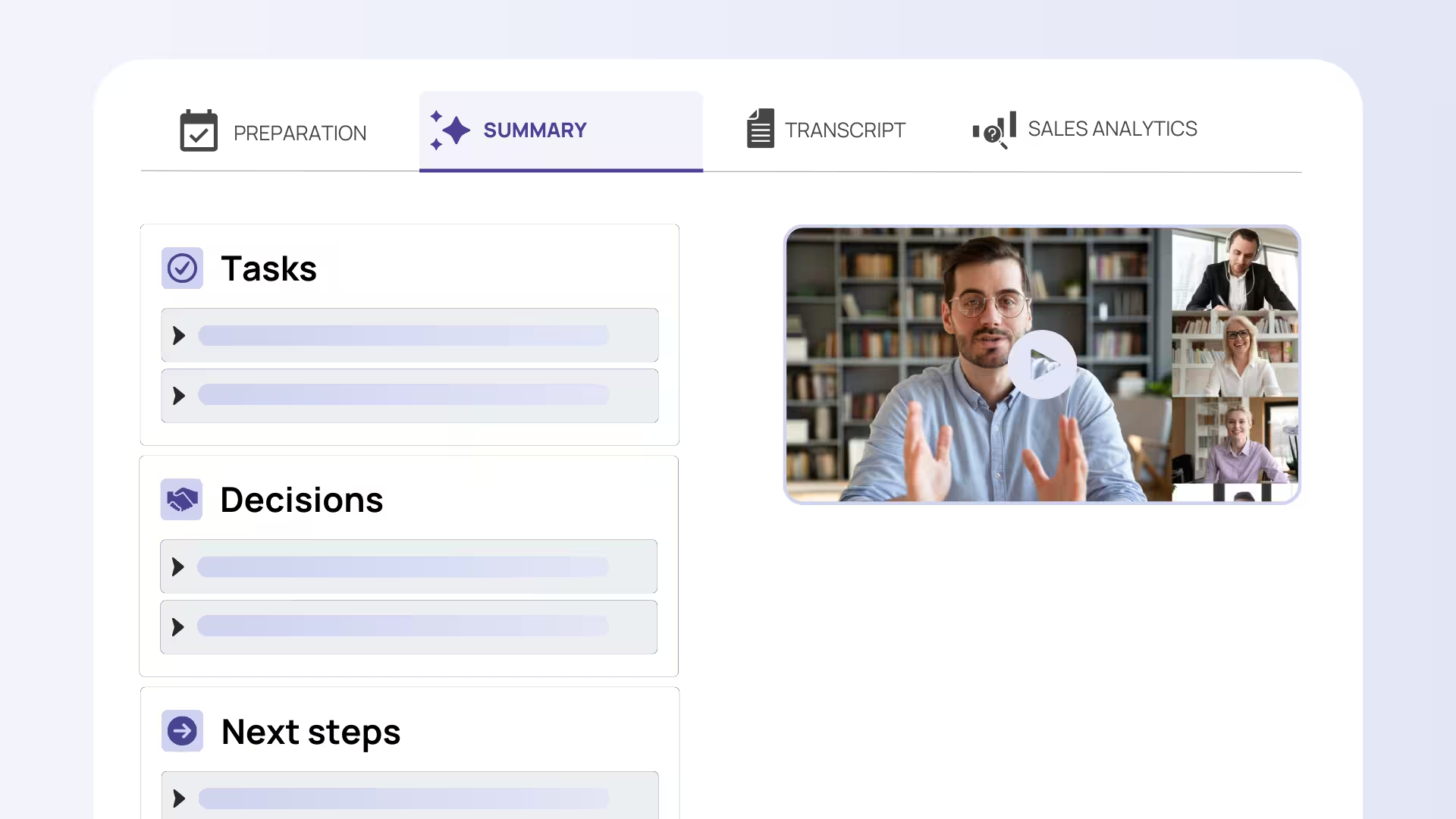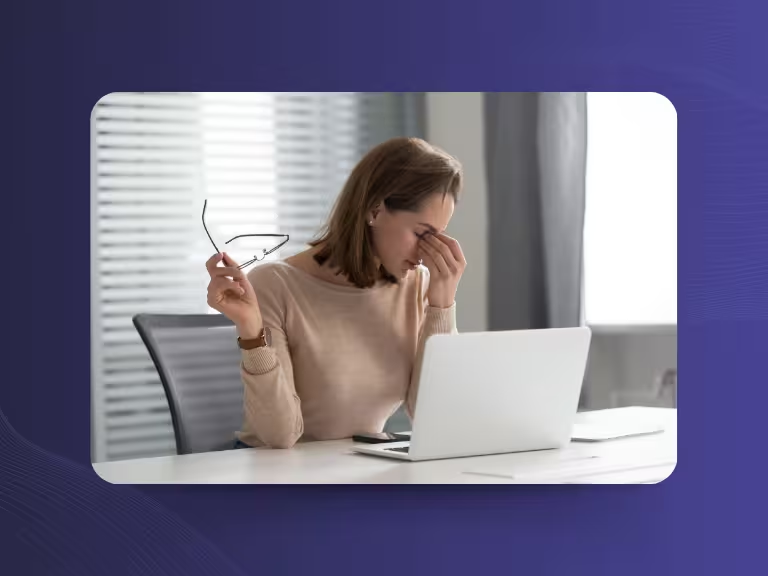Table of Contents
Do you know that feeling? After a day full of video conferences, you feel completely exhausted – even though you've only been sitting in front of a screen. This phenomenon has a name: Zoom Fatigue. Since the pandemic made home offices and online meetings part of everyday life, this digital exhaustion affects millions of professionals, students, and educators worldwide. According to a Stanford study, 62% of users feel more stressed after video conferences than after conventional phone calls. Time to take a closer look: What's behind this modern form of fatigue and how can you protect yourself?
What is Zoom Fatigue? Definition and Typical Symptoms
Basic Understanding of Zoom Fatigue
Zoom Fatigue describes the mental and physical exhaustion that arises from frequent or long video conferences. The term goes beyond the normal tiredness after a long workday. It's a specific form of overwhelm that's directly connected to the intensive use of video conferencing platforms.
Unlike classic burnout, which develops over months, Zoom Fatigue can occur after just a few hours. Particularly affected are professionals working from home who have multiple online meetings daily, students in virtual lectures, and teachers who must juggle between teaching and technology management.
The Most Common Symptoms at a Glance
The signs are diverse and often subtle. Mental fatigue shows through declining concentration and difficulty following meeting content. Many affected people report "brain fog" – the feeling as if the brain is working wrapped in cotton.
Physically, Zoom Fatigue manifests through burning, dry eyes. Headaches arise from unnatural posture and constantly staring at the screen. Tension in neck and shoulders are typical companions of long video sessions.
Psychologically, video conference fatigue expresses itself through increased stress and sometimes even social anxiety. Some people develop a real aversion to camera meetings. The emotional exhaustion often leads to motivation drops and the feeling of being less productive.
Causes of Zoom Fatigue – Why Video Conferences Are So Tiring
Intense Eye Contact and Self-Observation
A main reason for digital exhaustion lies in the unnatural intensity of eye contact. In normal conversations, we don't constantly look into our conversation partner's eyes. In video conferences, however, we continuously stare at faces – and that for hours on end. This constant attention overwhelms our brain.
Even more problematic is our own video image. Imagine you would constantly look into a mirror during every conversation. That's exactly what happens in video conferences. This constant self-observation increases psychological pressure enormously. You unconsciously pay attention to your facial expressions, sit more stiffly, and appear less natural.
Cognitive Stress from Digital Communication
Our brain is programmed to read nonverbal signals. In video conferences, this is significantly more difficult. Small delays, poor image quality, or a limited screen view make it harder to interpret body language and facial expressions. The brain must expend more energy to fill these "gaps."
Technical problems additionally intensify home office stress. An unstable internet connection, audio feedback, or the notorious "Can you hear me?" cost mental resources. This constant uncertainty about technology keeps us in a state of heightened tension.

Multitasking and Missing Rest Breaks
Many people use video conferences as an opportunity for multitasking. Emails are answered on the side, notes are taken, or other tasks are completed. This divided attention exhausts the brain faster than focused work.
Particularly problematic are "chain meetings" – one appointment after another, without breaks. In normal offices, natural interruptions arise from walking to the meeting room. In the home office, you click directly from one meeting to the next. These missing micro-recoveries add up to considerable exhaustion.
Zoom Fatigue in Different User Groups & Cultural Differences
Specific Challenges of Various Target Groups
Students struggle with particularly long online lectures, often without the interaction of a classic lecture hall. The missing personal exchange with fellow students intensifies the feeling of isolation. Many report that they feel more drained after a day of virtual seminars than after in-person events.
Teachers face the challenge of simultaneously teaching and managing technology. They must hold students' attention through the screen – a significantly more difficult task than in the classroom. The constant presence in front of the camera, often for several hours daily, leads to increased stress.
Professionals in home offices tend toward self-overburden. The boundaries between work and private life blur. Many accept more meetings than in the office because commuting is eliminated. This constant availability and pressure to always be "available" intensifies online meeting fatigue.
Cultural Influences on the Perception of Zoom Fatigue
Interestingly, Zoom Fatigue is perceived differently across cultures. In collectively oriented cultures, where group dynamics and social harmony are more important, people report more intensive exhaustion. The pressure to function "correctly" in the group is harder to manage via video.
In individualistic cultures, however, technical aspects and personal productivity often take center stage. Expectations of constant availability and perfect self-presentation vary greatly between different work cultures and significantly influence stress levels.
Effective Strategies Against Zoom Fatigue – How to Protect Yourself
Conscious Meeting Design and Break Management
The first step is conscious appointment planning. Avoid chain meetings and plan at least 10-15 minutes buffer between video conferences. Use this time for a short walk, stretching, or simply looking out the window.
The 20-20-20 rule is particularly effective: Every 20 minutes, look at something that's at least 20 feet (about 6 meters) away for 20 seconds. This relaxes the eyes and reduces strain. Not every meeting needs to be a video call. Phone calls are often just as suitable and significantly less tiring.
Smart tools like Sally can help here. As an AI meeting assistant, Sally takes over recording, transcription, and summarization of meetings. This significantly reduces your mental effort since you can focus fully on the conversation without constantly having to take notes.

Technical and Spatial Tips
One of the most effective measures is deactivating the self-view function. Most video conferencing tools offer the option to hide your own image. This reduces self-observation and lets you act more naturally.
Pay attention to good lighting and an ergonomic workspace. The screen should be at eye level to avoid neck tension. An external monitor can help since you don't have to constantly look at the laptop display.
Experiment with flexible meeting formats. Smaller groups are less tiring than large rounds. Audio-only meetings for brainstorming sessions or updates can significantly reduce video conference fatigue.
Companies & Educational Institutions Bear Responsibility
Companies should invest in digital competence and stress management. Training helps establish efficient meeting cultures. Clear guidelines on when video is necessary and when it's not relieve employees.
An open feedback culture is crucial. Employees must feel they can address overwhelm without being seen as less resilient. Regular surveys on digital exhaustion can help identify problems early.
Modern tools like Sally can help increase meeting efficiency. Through automatic documentation and analysis, companies can recognize which meetings are truly productive and which might be unnecessary.
Looking to the Future – Long-term Effects and Technological Developments
Possible Long-term Effects of Zoom Fatigue
First long-term studies show concerning trends. Chronic Zoom Fatigue can lead to real burnout, reduce productivity long-term, and intensify social isolation. Particularly problematic is that many don't initially take the symptoms seriously.
Mental health becomes a central factor in the digital working world. Companies that ignore this risk higher sick leave rates and turnover. Sustainable digital work models must consider human limits, not just technical possibilities.
Innovative Approaches to Reducing Zoom Fatigue
Technology continues to evolve. AI-supported meeting tools can already automatically suggest breaks when they detect signs of fatigue in voice or behavior. Dynamic user interfaces adapt to users and reduce visual overload.
Sally and similar AI assistants are revolutionizing meeting culture. They take over tedious tasks like note-taking and follow-ups, so people can focus again on what's essential: human interaction. This relief can significantly reduce Zoom Fatigue.
Future developments could include intelligent cameras that automatically adjust viewing angles, or software that optimizes image quality to reduce cognitive load.
Conclusion: Understanding Zoom Fatigue – Acting – Staying Healthy
Zoom Fatigue is not a luxury problem, but a real phenomenon of the digital working world. The causes are diverse – from the unnatural intensity of eye contact to technical disruptions to cultural expectations. Different user groups are affected differently, but no one is immune to this modern form of exhaustion.
The good news: There are effective strategies. Conscious meeting planning, technical optimizations, and the courage to sometimes turn off the camera can make the difference. Companies and educational institutions bear special responsibility in promoting healthy digital work structures.
Technological innovations like AI meeting assistants offer promising solutions for the future. They can help us get the best out of digital communication without exhausting ourselves in the process.
Ultimately, it's about finding the balance between technical possibilities and human needs. Zoom Fatigue is avoidable – if we deal with it consciously and continuously question our digital habits. The future of work is digital, but it must also remain human.

Try meeting transcription now!
Experience how effortless meeting notes can be – try Sally free for 4 weeks.
Test NowOr: Arrange a Demo Appointment

.avif)


